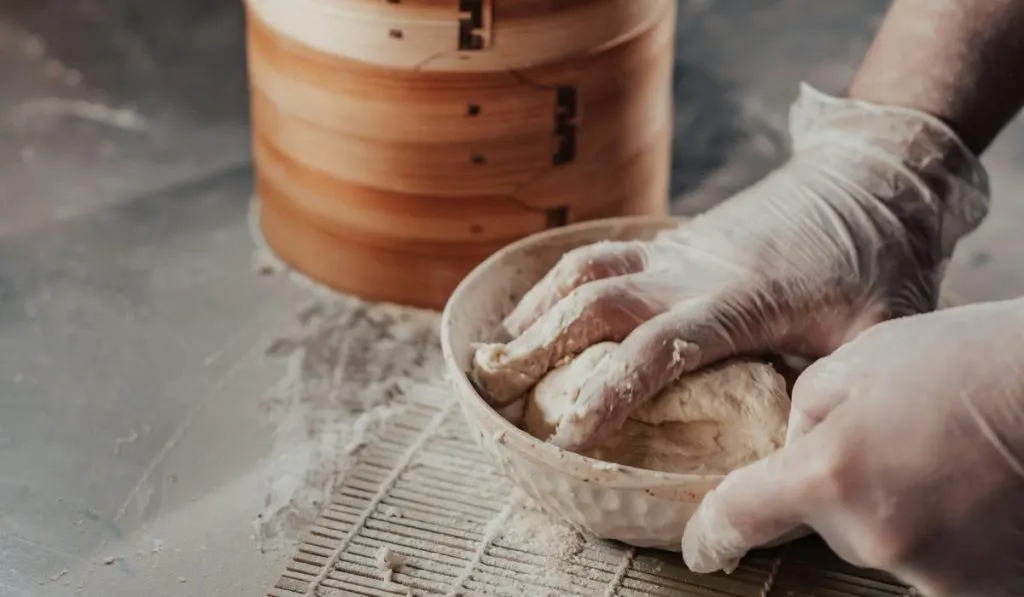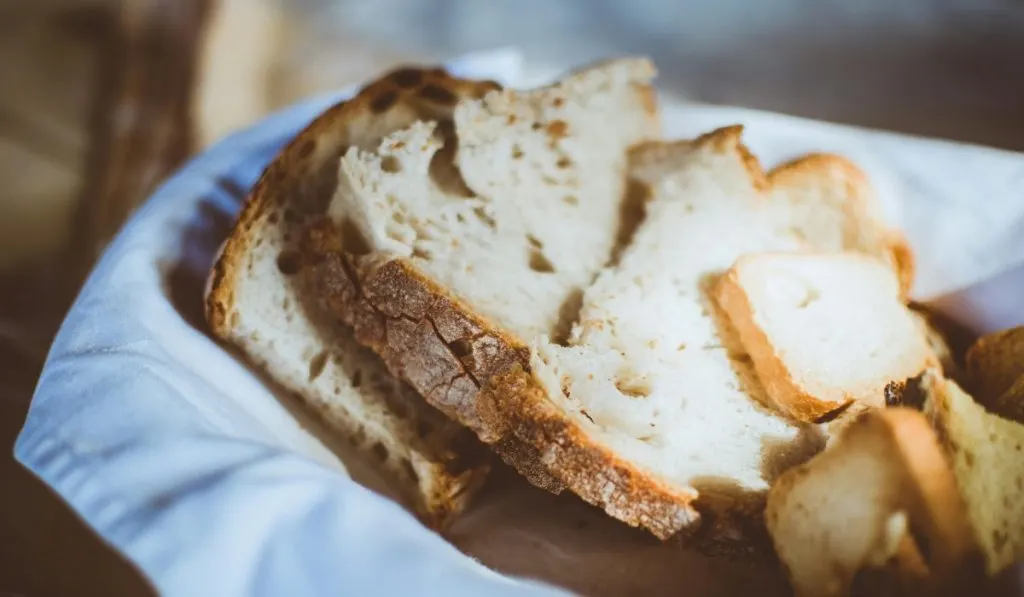
Have you ever dreamed of savoring the tangy, crusty goodness of sourdough bread while staying true to your keto lifestyle? We get it – the struggle is real. You’re tired of the dense, crumbly disappointments and the seemingly endless search for that perfect balance of flavor and texture. Well, fret no more! In this comprehensive guide, we’ll unveil the secrets to baking mouthwatering keto sourdough bread that will satisfy your cravings and keep you in ketosis.
TL;DR:
- Discover the essential ingredients and tools for keto sourdough bread.
- Learn the step-by-step process for creating the perfect dough and baking it to perfection.
- Explore tips and tricks for achieving the ideal texture and flavor.
- Get answers to frequently asked questions about keto sourdough bread.
Why Keto Sourdough Bread is a Game-Changer
Sourdough bread has always been a favorite for its distinctive tangy flavor and satisfying chewy texture. Yet, its high carbohydrate content makes it unsuitable for those adhering to a ketogenic diet. Enter keto sourdough bread—a revolutionary twist on the classic loaf that lets you savor the best of both worlds.
Benefits of Keto Sourdough Bread
- Low-Carb Delight: Traditional sourdough relies on flour with a high carb count, but keto sourdough substitutes almond flour, coconut flour, and psyllium husk. These low-carb alternatives keep your carb intake in check, helping you stay in ketosis and continue burning fat efficiently.
- Tangy Flavor: Keto sourdough maintains the beloved tangy taste through a unique fermentation process, often using apple cider vinegar or sauerkraut juice. This gives it the classic sourdough flavor without the high carb load.
- Digestive Health: The inclusion of psyllium husk and flaxseed meal in keto sourdough not only lowers carbs but also boosts fiber content. Fiber aids in digestion, promotes gut health, and helps you feel fuller for longer.
- Versatile Use: Keto sourdough is incredibly versatile. Enjoy it toasted for breakfast, as a base for sandwiches, or as a side for soups and salads. Its texture and flavor make it a delightful addition to any meal.
- Gluten-Free: Made without traditional flours, keto sourdough bread is naturally gluten-free, making it a safe choice for those with gluten sensitivities or celiac disease.
Innovative Techniques
Baking keto sourdough involves innovative techniques to replicate the rise and texture of traditional sourdough. Egg whites, baking powder, and baking soda replace yeast, ensuring the bread rises properly. These substitutions, combined with the right balance of moisture and binding agents, create a loaf that mimics the airy, chewy texture of conventional sourdough.
Keto sourdough bread is a game-changer for those on a ketogenic diet. It offers the delicious tang and chew of traditional sourdough while aligning with low-carb dietary needs. Enjoy the rich flavors and health benefits of this innovative bread without compromising your keto lifestyle.
Keto Sourdough Bread Benefits: Why Choose Keto Sourdough Bread?
Keto sourdough bread offers a delightful fusion of health benefits and culinary satisfaction, making it a preferred choice for those on a ketogenic diet. Here’s why you should consider adding keto sourdough bread to your diet:
Health Benefits:
- Low-Carb Content: Unlike traditional sourdough, keto sourdough bread is made with low-carb ingredients like almond flour, coconut flour, and psyllium husk. This keeps your carb intake low, helping you maintain ketosis and promoting fat burning.
- High Fiber: The use of psyllium husk powder and flaxseed meal increases the fiber content, aiding digestion and promoting gut health. Fiber helps you feel full longer, reducing overall calorie intake.
- Rich in Healthy Fats: Ingredients like almond flour and flaxseed meal provide healthy fats essential for energy on a keto diet. These fats support brain health and help in the absorption of fat-soluble vitamins.
- Gluten-Free: Keto sourdough bread is naturally gluten-free, making it suitable for those with gluten sensitivities or celiac disease.
Why Choose Keto Sourdough Bread?

- Satisfying Texture and Flavor: Keto sourdough bread offers the tangy, chewy texture of traditional sourdough, without the high carb content. Its unique fermentation process provides a distinctive sour flavor that many bread lovers crave.
- Versatility: This bread can be used in various ways—toast it for breakfast, use it for sandwiches, or serve it as a side with soups and salads. Its versatility makes it a valuable addition to your keto meal plan.
- Homemade and Fresh: Baking your keto sourdough bread ensures it’s free from preservatives and additives, providing a healthier and fresher option compared to store-bought breads.
- Control Over Ingredients: When you bake your own keto sourdough, you have complete control over the ingredients, ensuring high-quality, organic components that suit your dietary needs and preferences.
Incorporating keto sourdough bread into your diet not only supports your ketogenic lifestyle but also adds variety and satisfaction to your meals. Enjoy the benefits of a healthier bread option that doesn’t compromise on taste or texture.
Ingredients, Role, and Benefits for Keto Sourdough Bread
| Ingredient | Role | Benefits |
|---|---|---|
| Almond Flour | Main flour substitute | Low in carbs, high in healthy fats and vitamin E |
| Coconut Flour | Secondary flour substitute | Adds density, high in fiber and MCTs |
| Psyllium Husk Powder | Binding agent, adds structure | High in fiber, promotes digestive health |
| Flaxseed Meal | Adds nuttiness and fiber | Rich in omega-3 fatty acids, supports heart health |
| Egg Whites | Provides rise and binding | Adds protein, helps with leavening |
| Apple Cider Vinegar | Adds tang, simulates fermentation | Contains acetic acid, supports digestion |
| Buttermilk | Hydration, tang | Adds moisture, tangy flavor (can be substituted for dairy-free) |
| Baking Powder | Leavening agent | Helps the bread rise |
| Baking Soda | Leavening agent | Works with vinegar to aid rising |
| Salt | Enhances overall flavor | Balances flavors, essential for taste |
| Water | It helps hydrate the dry ingredients, activates the psyllium husk powder and flaxseed meal, and creates a cohesive dough that is easy to shape and bake. | Activation of Leavening Agents, Hydration and Flavor Distribution |
| Add-ins (Nuts and Seeds, Dried Fruits, Citrus Peels, Spices, Garlic and Herbs) | Enhancing flavor and texture | Very low in carbs |
Ingredients for Keto Sourdough Bread
Creating the perfect keto sourdough bread starts with the right ingredients. Here’s what you’ll need:
Ingredients
- Almond Flour: 2 cups
- Coconut Flour: 1/4 cup
- Psyllium Husk Powder: 1/4 cup
- Flaxseed Meal: 1/4 cup
- Baking Powder: 2 teaspoons
- Baking Soda: 1/2 teaspoon
- Egg Whites: 4 large
- Apple Cider Vinegar: 1 tablespoon
- Buttermilk: 1 cup (or 3/4 cup coconut milk + 1/4 cup lemon juice for dairy-free)
- Salt: 1 teaspoon
- Water: 1 cup (adjust as needed to achieve the right dough consistency)
- Optional Add-ins (quantities to taste, adjust as desired)
Keto Sourdough Bread Add-ins: Elevate Your Keto Baking
Enhancing your keto sourdough bread with various add-ins can take your loaf from ordinary to extraordinary. Here’s how you can infuse extra flavor, texture, and nutritional benefits into your bread:
Nuts, Seeds, and Dried Fruits
- Nuts: Incorporate chopped almonds, walnuts, or pecans to add a crunchy texture and healthy fats. These nuts not only boost the flavor but also increase the bread’s nutritional profile.
- Seeds: Add chia seeds, sunflower seeds, or flaxseeds for an extra dose of fiber and a delightful crunch. Seeds are excellent for improving the bread’s texture and providing essential nutrients.
- Dried Fruits: For a hint of natural sweetness, use small amounts of dried berries or unsweetened dried cranberries. These add a chewy texture and bursts of flavor without compromising your keto diet.
- Citrus Peels: Finely grated lemon or orange zest can introduce a refreshing citrus note, enhancing the bread’s tangy profile.
Spices and Herbs
- Spices: Warm spices like cinnamon, nutmeg, and cardamom can add a cozy, aromatic touch to your bread. These spices are perfect for creating a comforting flavor ideal for breakfast or dessert.
- Garlic: Minced garlic can infuse the bread with a savory depth, making it perfect for pairing with soups or savory dishes.
- Herbs: Fresh or dried herbs like rosemary, thyme, or basil can provide a fragrant and flavorful twist. Herbs enhance the bread’s aroma and complement its sourdough tang.
Optional Add-Ins for Keto Sourdough Bread
| Ingredient | Role | Benefits |
|---|---|---|
| Nuts | Add a crunchy texture and healthy fats | Boost flavor, increase nutritional profile with healthy fats and proteins |
| -Almonds | Rich in vitamin E and magnesium | |
| -Walnuts | High in omega-3 fatty acids, support heart health | |
| -Pecans | Provide antioxidants and healthy fats | |
| Seeds | Add fiber and a delightful crunch | Improve texture, provide essential nutrients, and increase fiber content |
| -Chia Seeds | High in omega-3 fatty acids, antioxidants, and fiber | |
| -Sunflower Seeds | Rich in vitamins E and B, promote skin and heart health | |
| -Flaxseeds | High in fiber and omega-3 fatty acids, support digestive health | |
| Dried Fruits | Add a hint of natural sweetness | Provide chewy texture and bursts of flavor without compromising keto diet |
| -Dried Berries | Low in carbs, high in antioxidants | |
| -Unsweetened Cranberries | Offer tangy sweetness with minimal carbs | |
| Citrus Peels | Introduce a refreshing citrus note | Enhance the bread’s tangy profile with natural flavors |
| -Lemon Zest | Adds a bright, zesty flavor | |
| -Orange Zest | Provides a sweet, citrusy aroma | |
| Spices | Add aromatic and warm flavors | Create comforting and aromatic bread, ideal for breakfast or dessert |
| -Cinnamon | Offers sweet, warming flavor, and has antioxidant properties | |
| -Nutmeg | Adds a warm, nutty flavor and aids digestion | |
| -Cardamom | Provides a sweet, spicy flavor, and has anti-inflammatory benefits | |
| Garlic | Infuse the bread with savory depth | Perfect for pairing with soups or savory dishes, supports immune health |
| Herbs | Add fragrant and flavorful twists | Enhance aroma and complement sourdough tang with fresh, vibrant flavors |
| -Rosemary | Offers pine-like flavor, and supports memory and concentration | |
| -Thyme | Adds earthy, lemony notes, and has antimicrobial properties | |
| -Basil | Provides a sweet, peppery flavor, and contains antioxidants |
By incorporating these optional add-ins, you can tailor your keto sourdough bread to suit your taste preferences and dietary needs. Enjoy experimenting with different combinations to find your perfect loaf.
Personal Advice
When incorporating add-ins, fold them into the dough during the final mixing stage to ensure even distribution without overworking the dough. Start with small quantities, such as a tablespoon of seeds or a teaspoon of spices, and adjust according to your taste preferences.
Combining sweet and savory elements, like cinnamon with walnuts or garlic with rosemary, can create a balanced and complex flavor profile. This experimentation will not only improve your bread’s taste but also make the baking process more enjoyable.
The Keto Sourdough Starter
Traditional sourdough starters are high in carbs, but with a few tweaks, you can create a keto-friendly version. The key ingredients for a keto sourdough starter include psyllium husk powder and apple cider vinegar, which simulate the fermentation process without the carbs.
Step-by-Step Guide to Baking Keto Sourdough Bread

Instructions
- Preheat Your Oven: Preheat your oven to 350°F (175°C). If using a pizza stone, preheat it to 400°F (200°C).
- Prepare the Dry Ingredients: In a large bowl, combine 2 cups almond flour, 1/4 cup coconut flour, 1/4 cup psyllium husk powder, 1/4 cup flaxseed meal, 2 teaspoons baking powder, 1/2 teaspoon baking soda, and 1 teaspoon salt. Mix well to ensure all dry ingredients are evenly distributed.
- Mix the Wet Ingredients: In a separate bowl, whisk together 4 large egg whites, 1 cup buttermilk (or coconut milk and lemon juice mixture for dairy-free), and 1 tablespoon apple cider vinegar.
- Combine Wet and Dry Ingredients: Gradually add the wet ingredients to the dry ingredients, mixing thoroughly until a dough forms. The dough should be well-mixed and slightly sticky.
- Shape the Dough: Shape the dough into your desired form, whether it’s a loaf, baguette, or rolls. Place the shaped dough on a parchment-lined baking sheet or preheated pizza stone.
- Rest the Dough: Allow the dough to rest for about 15 minutes. This resting period helps the ingredients meld and ensures a better texture.
- Score and Steam: Score the top of the dough with a sharp knife to allow it to expand properly during baking. Add ice cubes to the oven to create steam, which helps in forming a crust.
- Bake the Bread: Bake in the preheated oven for 40-45 minutes, or until the crust is golden brown and a toothpick inserted into the center comes out clean.
- Cool the Bread: Let the bread cool completely before slicing to set the texture. This step is crucial for achieving the perfect consistency.
- Store the Bread: Store your keto sourdough bread in an airtight container to maintain freshness. It can be kept at room temperature for a few days or frozen for longer storage.
Tips and Tricks for Perfect Keto Sourdough Bread
Achieving the ideal keto sourdough bread requires a bit of finesse. Here are some insider tips to help you master the art:
- Balance Moisture: The right moisture level is crucial for texture. If your bread is too dense or crumbly, adjust the amount of buttermilk or add an extra egg white.
- Flavor Customization: Enhance the flavor by adding seasonings like Italian herbs or nuts like pecans and sunflower seeds.
- Steam Addition: Adding ice cubes to the oven creates steam, resulting in a better crust.
- Scoring Techniques: Artistic scoring not only makes your bread look professional but also allows it to expand properly.
- Portion Control: Even though keto sourdough is low in carbs, portion control is still important to maintain ketosis.
Common Issues and How to Fix Them
Baking keto sourdough bread can come with its challenges. Here are some common issues and how to solve them:
- Dense Texture: If your bread is too dense, try adding a bit more baking powder or an extra egg white to lighten it up.
- Crumbly Texture: Crumbly bread usually means there’s not enough binding agent. Increase the amount of psyllium husk powder or egg whites.
- Flavor Issues: If the flavor is off, make sure you’re using fresh ingredients. Stale flours or expired baking powder can negatively impact the taste.
Conclusion
Baking keto sourdough bread may seem daunting at first, but with the right ingredients, techniques, and a bit of patience, you can create a delicious and healthy loaf that fits perfectly into your keto lifestyle. By carefully selecting low-carb ingredients like almond flour and psyllium husk powder, and using innovative techniques to replicate the fermentation process, you can enjoy the tangy flavor and satisfying texture of traditional sourdough without the guilt.
From my experience, one key to success is ensuring your ingredients are fresh and of high quality. Stale flours or expired leavening agents can impact the flavor and rise of your bread. Additionally, don’t rush the resting and cooling stages. Allowing the dough to rest before baking helps meld the ingredients, and cooling the bread completely before slicing ensures the perfect texture.
Experiment with flavors by adding herbs, seeds, or even a touch of garlic to your dough. This can elevate the taste and make your keto sourdough bread even more enjoyable. If you’re new to baking, don’t be discouraged by initial challenges. Baking is both an art and a science, and practice will improve your skills over time.
Another tip is to use a kitchen scale for precise measurements, especially when dealing with flours. This accuracy can make a significant difference in the consistency of your dough.
Final Thoughts
Keto sourdough bread is a game-changer for those following a ketogenic diet. It allows you to indulge in the beloved tangy, chewy goodness of sourdough while staying true to your low-carb goals. With this guide, you have all the tools and tips you need to bake the perfect loaf.
Enjoy the process, savor the results, and happy baking!
FAQs About Keto Sourdough Bread
What is the key ingredient in keto sourdough bread?
The key ingredient in keto sourdough bread is almond flour, which provides the bulk of the dough while keeping it low in carbs.
Can I make dairy-free keto sourdough bread?
Yes, you can substitute buttermilk with a mix of coconut milk and lemon juice, and butter with olive oil to make a dairy-free version.
How do I store keto sourdough bread?
Store keto sourdough bread in an airtight container at room temperature for a few days, or freeze it for longer storage.
Why is my keto sourdough bread dense?
If your bread is dense, try adding more baking powder or an extra egg white to lighten it up. Ensure you’re not over-mixing the dough.
How do I achieve a good crust on keto sourdough bread?
Adding ice cubes to the oven creates steam, which helps form a crust. Also, scoring the top of the dough allows it to expand properly during baking.
Join Us and Transform >
Don’t Be an Amateur! Master the Art of Sourdough Bread!




Leave a comment